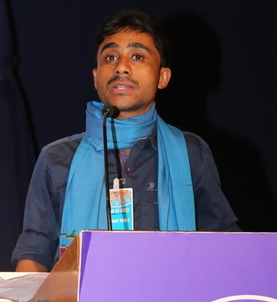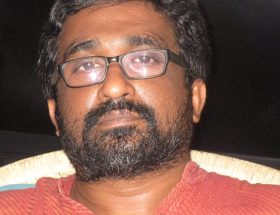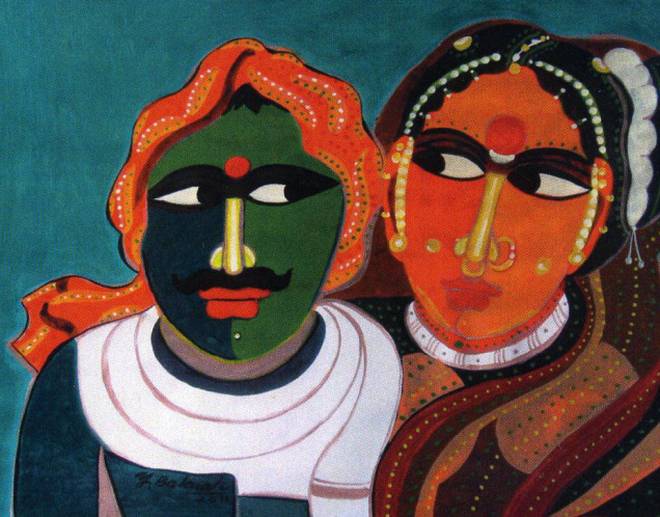Dr. Narendra Kumar Arya
 While the nation is aflame and furious, against the inhumane persecution caused by brahminical system prevalent in our public institutions leading to the suicide of Rohith Vemula, the coverage of Yashica Dutt’s revelations as a Dalit journalist has also been given importance (in NDTV, BBC Hindi, Indian Express, The Huffington Post etc.) These are two antagonistic cases of dealing with a system of prejudice, discrimination and denial of opportunity to Dalits. Rohith and Yashica both belong to a talented breed of Dalits. One showed his potential brilliance in popular science writing and the other in journalism, still a highly brahministic profession. One tried to fight the brahministic traditions and its mental pathology being an organic Dalit intellectual, an epitaph conied by Gail Omvedt; the other hoodwinked Brahmanism through its own brahministic Brahmastra- putting on a Brahmin identity to foil Brahmanism.
While the nation is aflame and furious, against the inhumane persecution caused by brahminical system prevalent in our public institutions leading to the suicide of Rohith Vemula, the coverage of Yashica Dutt’s revelations as a Dalit journalist has also been given importance (in NDTV, BBC Hindi, Indian Express, The Huffington Post etc.) These are two antagonistic cases of dealing with a system of prejudice, discrimination and denial of opportunity to Dalits. Rohith and Yashica both belong to a talented breed of Dalits. One showed his potential brilliance in popular science writing and the other in journalism, still a highly brahministic profession. One tried to fight the brahministic traditions and its mental pathology being an organic Dalit intellectual, an epitaph conied by Gail Omvedt; the other hoodwinked Brahmanism through its own brahministic Brahmastra- putting on a Brahmin identity to foil Brahmanism.
Donning a false Brahmin tag steered Yashica smoothly and successfully to Columbia University School of Journalism. Her journey from a call centre executive to Columbia highlights her desire to fight the odds and take success in her stride. It was very logical for Yashica to dodge the brahministic system; but, this also raises many point as far as the Dalit movement is concerned. Yashica is not first of her kind to have done this perceptive but compelling act. It is very frustrating and depressive to succumb to conditions of persecution and discrimination only because you belong a particular identity and always be demoralised by donning it. She did not want to drain out her energies to fight odds of the system which are difficult to defeat with a Dalit identity. She avoided yielding to the common slurs like “caste”, “reservation” or “bhangi”. Radical Marathi writer Baburao Bagul in his trend setting collection of short stories Jevha Mi Jaat Chorli (When I had Concealed My Caste-1963) wonderfully portrayed this phenomenon. It has been said that imitation is the sincerest expressive form of submission. Submission poses no threat to a system, allowing it to continue without obstruction. It is only resistance and rebellion that present the schema of deconstruction. Rohith challenges the mental apathy to the continuation of an epidemic surviving unchecked, engendering caste-based humiliation, aberration and exploitation among millions of people, demoralising minds and souls.
Success matters, but it also matters, how you achieve it. Act of individual success and its social repercussions to the whole society, matter even more. Here lies the iconic symmetry between the Dalit movement and Rohith Vemula (and Ambedkarite ideology), and ends the relevance of Yashica Dutt’s individual story of success. Ambedkarite movement does not value individual emancipation at the neglect of entire community left for suffering. Ambedkar had warned during his own time that real threats will emanate from middle class Dalits who will weaken and damage the anti-caste movement, as they will be motivated by their parochial self-perpetuating interests, lacking any concerns for the entire fraternity. Dalit movement has emerged as one of the most radical movements in Indian society getting inspiration from Ambedkar and other organic Bahujan thinkers and ideologues. Without any question, it leaves even the Marxist movements to shame when we deliberate its vision of transforming Indian society. It does not simply confront the economic structures, but believes, cultural and ritual traditions and practices in a society could evolve into more powerful instruments of systematic exploitation, estrangement and deprivation. Caste has acquired the same monstrous character and obnoxious strength in Indian society. It cannot be simply reformed. It has to be simply annihilated. Annihilation of caste stands for social democracy where humanity is seen as one unit, disproving any notions of psychological, social, cultural or economic discrimination and inequality. Caste has proved more inhumane and fatal than any other categorisation of discrimination and alienation of separated people, denying any opportunity of power mobilisation.
Rohith lived by this ideology and even dared to die for it. He did not want it to be diluted by the miscreant acts of societal amnesia. He did not resist for himself but for all the brethren of his community, and other margimnalised communities, who are being victimised by the caste based discrimination in public life, especially in educational institutions. Rohith demonstrated noticeable interest in a diverse field of ideas. He thought not just about his community, but as an holistic thinker about the war of man against nature degeneration of human society, role of caste as a psychological traumatic phenomenon to sections of society victimised by it, rising stature of rightist ideology in the social fabric of the nation and its fatal sociological consequences, and of course his love for science and need for internalisation of it in society to combat irrationalism and ignorance of various categories. Besides, as an activist in Hyderabad University, he became a voice of the subjugated, resisting against the discrimination caused by upper caste hegemony which is causing a demoralising atmosphere, asphyxiating the potential growth of the lower caste student community. The Ambedkar Students’ Association (ASA) of which Rohith was one of the loudest voices, comprises a diverse pool of marginalised groups, from Muslims to Adivasis to students from Kashmir and the North East. It is against the hegemony of monolithic caste-Hindus and their mean practices to degrade the intellectual standards and academic diversity in educational institutions of India. The ASA ideology has acquired footings in other educational institutions, plagued by anti-Bahujan exploitation and caste based–biases, like in Osmania University, the Pondicherry University and the Tata Institute of Social Sciences in Mumbai. ASA also embodies dissent against the reinforcement of the Hindu Right, described as ‘conservative revolution’ by Thomas Hansen.
Caste has acquired the adaptive skills of biological beings. From the sinkholes of rural India to urban jungles. It has transformed and accommodated to keep its clutches on social strands undiminished, as has been concluded by several scholarly studies as well. The democracy in India is critically ailing with elitism, and predominance of elite among the elected, overlapping with high castes, make it pathetically outrageous. It does not represent and respect the people who elect it, but acts like an alien parasite nibbling at the scare societal resources and wealth. Dalit ideology disapproves of any privilege enjoyed and asserted on the basis of birth or ritual invocation and legitimised by heinous acts with scriptural and ontological instruments. Rohith today commands respect in the Dalit movement because he symbolises these ideas, values, and aspirations. His tragic demise has given new impetus to anti-caste intellectuals and organisations to battle with reinvigorated force.
~~~
Narendra K. Arya is a poet,writer and formerly college teacher. His work has featured in the most reputed Hindi literary journals and many international webzines. Nominated by web magazine ‘Camel Saloon’ for best poem published on net for year 2013-14. Blog: www.antidote.blogspot.com & email:
mail.naren_ary@yahoo.com










